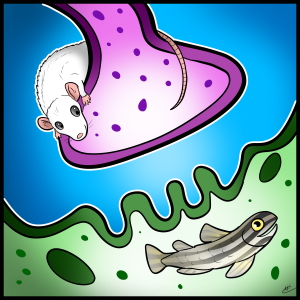New publication: quality of life of patients with SMA: a systematic review
Quality of life (QoL) is an important measure to help understand the clinical implications of a disease and inform optimum medical management, as well as to facilitate economic evaluations of new health technologies. As new therapies for spinal muscular atrophy (SMA) enter the market, it is increasingly important to establish measures of QoL in the different SMA types in order to have a baseline from which to assess treatment effect. This systematic review identified 15 relevant published studies out of 824 articles evaluated, covering 11 countries and three continents. Overall, while it was evident that SMA does affect QoL, in particular in the domain of physical health, there was a high level of variability between studies and between patient and caregiver responses. This makes it challenging to establish a standardised baseline, and little is known about the impact of the disease across different phenotypes, interventions and treatments.
Read the full publication at the journal website here.
Landfeldt E, Edström J, Sejersen T, Tulinius M, Lochmüller H, Kirschner J
Quality of life of patients with spinal muscular atrophy: a systematic review
European Journal of Paediatric Neurology
DOI: 10.1016/j.ejpn.2019.03.004
Abstract
Objectives

Senior author Jan Kirschner
To systematically review the literature of quality of life (QoL) of patients with spinal muscular atrophy (SMA), a rare, autosomal-recessive neuromuscular disease associated with extensive morbidity and elevated mortality.
Methods
We searched Embase, Web of Science, and PubMed for full-text, English-language articles (published between January 1, 2000 and July 31, 2018) reporting results from studies of QoL of patients with SMA. We excluded review and editorial articles, studies reporting results for samples comprising <5 patients (to allow for meaningful inference), and case reports/qualitative assessments.
Results
Of 824 identified articles, 15 met study criteria. Included publications contained data derived from samples from a total of 11 countries and three continents (Europe, North America, and South America). Estimates of the latent trait, primarily derived using the Pediatric Quality of Life Inventory (PedsQL) 4.0 Generic Core Scales and the PedsQL 3.0 Neuromuscular Module, indicated impairment in patient QoL, in particular physical functioning. However, both patient self- and caregiver proxy-assessments varied markedly across studies and subgroups. Among adult individuals, the mean self-assessed EuroQol-5D-3L utility has been estimated at 0.16 for a pooled sample of patients with SMA type I, II, and III, and −0.01 for SMA type II. Little is known of the impact of available treatments, including nusinersen, on patient QoL.
Conclusions
Our review shows that QoL is impaired in SMA, mainly due to compromised physical health, but also reveal that little is known of the impact of the disease across different phenotypes and clinical interventions.







